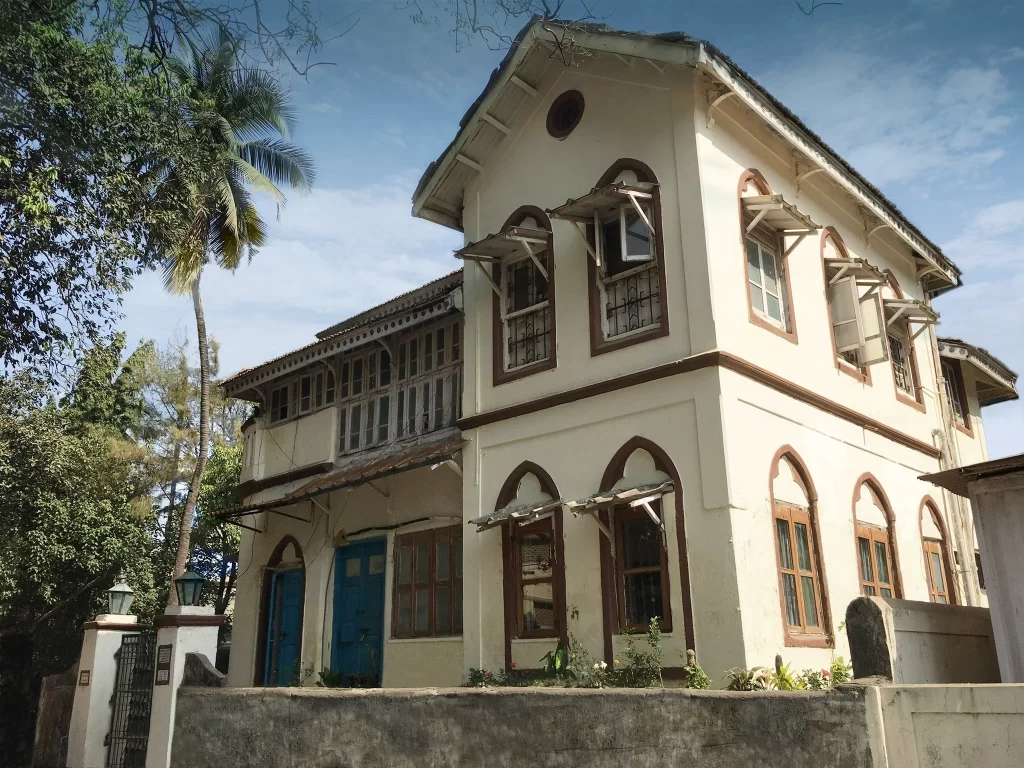Mumbai beyond its hustle and bustle is also home to a blend of architecture varying from Gothic, Victorian, Art Deco, Indo-Saracenic & Contemporary architectural styles. A fairly large number of structures and monuments remain from the colonial era dating back to the 18th and 19th Centuries. Also, the fact that Mumbai, after Miami, has the second largest number of Art Deco buildings in the world.
These architectural treasures have weathered with time, politics, as well as urbanization. These surviving colonial houses tell stories of a complex past, which blends a majorly European architectural sensibility with local adaptations that respond to Bombay’s climate and culture.
Architecture Adapted to Climate
The Colonial houses in Bombay have evolved to accommodate the tropical climate of the place. It features wide verandahs which provide shelter from the monsoon rains while also, allowing sea breezes to circulate through the houses. The distinct high ceilings with ornate rosettes and cornices created natural cooling systems before the advent of air conditioning. These practical adaptations merged with Neo-Gothic, Victorian, and Art Deco influences to create a distinctive “Bombay Gothic” style.
The iconic Byculla neighbourhood still preserves several of these homes, with their characteristic wooden jalousies (louvred shutters) and wrought iron balconies. Khotachiwadi and Dadar Parsi Colony are some areas with narrow lanes which open unexpectedly to brightly coloured facades with intricate woodwork.
Lives Within the Walls
These houses other than being architectural statements were home to generations of families. The bungalows of Malabar Hill housed British officials and wealthy Indian merchants who had prospered through trade. In places like Bandra and Mazgaon, Indian Catholic families maintained their distinct cultural identity within their homes which featured elements of Portuguese colonial architecture.
The Parsi families, who run much of Bombay’s business world, built distinctive and spacious homes in areas like Colaba and Fort. These houses largely had central courtyards where events and community gatherings took place and featured a blend of European exteriors with interiors adapted to traditional living patterns.
The Struggle for Preservation
Today, these architectural gems face existential threats as property markets skyrocket making the land beneath these single or double-storey structures worth many times more than these heritage bungalows themselves. Factors such as Development pressures, weak preservation laws, and the challenges of maintaining ageing wooden structures in a humid coastal region all contribute to their disappearance.
Organizations like the Mumbai Heritage Conservation Committee work tirelessly to document and protect these buildings. Residents like Rafique Baghdadi, who conducts heritage walks through these neighbourhoods, share their knowledge with younger generations to build appreciation for these irreplaceable treasures.
Living Heritage
What’s truly fascinating and nostalgic is that many still remain as living homes rather than museums. A large number of families continue their daily lives within these historical structures, while also adapting to contemporary needs and preserving their character.
One such corner of the Bombay Arts Society compound in Bandra houses the 140-year-old bungalow, known today as “Kipling’s Bungalow,” this modest structure once housed the young Rudyard Kipling, future Nobel laureate, who spent formative years absorbing the sights and sounds that would later colour controversial writings about India. The green-shuttered windows frame views dramatically changed since the 1880s, now housing the Dean’s office of Sir J.J. School of Art. The bungalow has been designed with a distinctive sloping roof designed to withstand monsoon downpours with wide corridors for ventilation.
These surviving colonial houses of Bombay stand as a reminder of the once flourishing trade centre, that includes oppression and resistance, cultural exchange and adaptation. As Mumbai flourishes and advances, these houses offer important perspectives on how the past continues to shape the present.
Image Courtesy of Philip Thornton
Contributor

